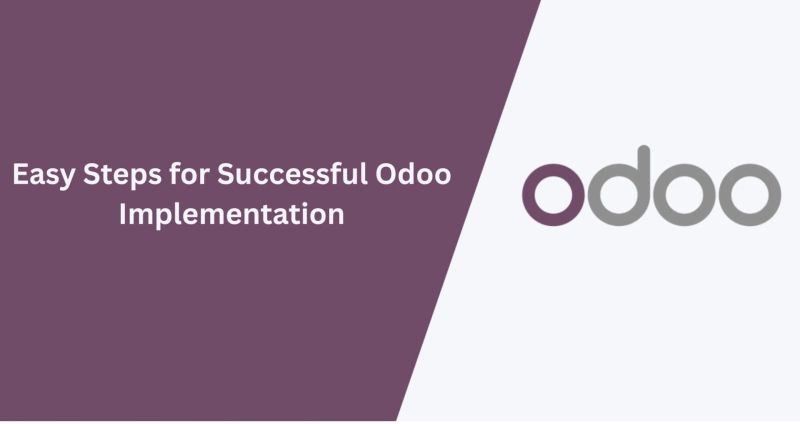Odoo implementation can bring a big change to your business, but implementing it successfully demands caution and proper planning.
Odoo implementation plays the biggest role in your business, but to successfully implement ERP to streamline your business operations, you need proper planning. Here are steps you need to follow.
1. Analyze Your Requirements
To start the first step of implementing ERP, you need to understand your business requirements and what types of business problems you want to fix with Odoo.
2. Choose the Right Version and Hosting
The second step is to select the right Odoo version and hosting. There are two different versions, Community Version (Free) and Enterprise Version (Paid). If you are running a small business, then the community version is best for you. Choose the best hosting from on-premises, cloud, or Odoo.sh, according to your budget.
3. Build a Project Team
Odoo Implementation requires a dedicated team. Including a project manager, IT experts, and business users in the team. Make the responsibilities of each member clear. Forming a team ensures that the right decisions are made at every stage.
4. Hire Odoo Developers or Partners
Hire Odoo developers or Partners to implement Odoo success without fail. Official Partner has expertise in ERP customization, data migration, and training. A trusted and certified good partner can make your process faster and more effective.
5. Plan and Set Timelines
For successful Odoo implementation, you need a clear plan. Decide how long each step will take to complete, then make deadlines. Decide which modules you want first. Planning is essential for any major process.
6. Data Migration
Data migration is the most critical part of implementing Odoo. Organize the data and migrate only the data that is really useful information. Clean the data and make sure it does not contain any errors. This step ensures accuracy in your new system.
7. Customization and Configuration
Every business is unique and has different needs. Make sure Odoo is customized for your business. Customize the required modules and workflows. Set users' roles and permissions.
8. Testing and Quality Assurance
Testing is a must before implementing Odoo. Test all the modules. Make sure the workflow is working properly. If there is any problem, fix it before implementing it. This step ensures the reliability of the ERP.
9. Train Your Users
Your team will need training to use Odoo properly. Train employees on the use of their modules. Resolve users' doubts during training. Make sure all employees understand the system properly.
Conclusion
Odoo implementation is complex, but it is necessary for business success. With the right planning, expert support, and phased implementation, you can make it a success.
Odoo ERP implementation is a systematic process that makes your business more effective, organized, and automated with the right planning, expert support, and user training.
It is possible to make it successful. It not only saves time and cost but also increases the productivity and decision-making ability of the business.



